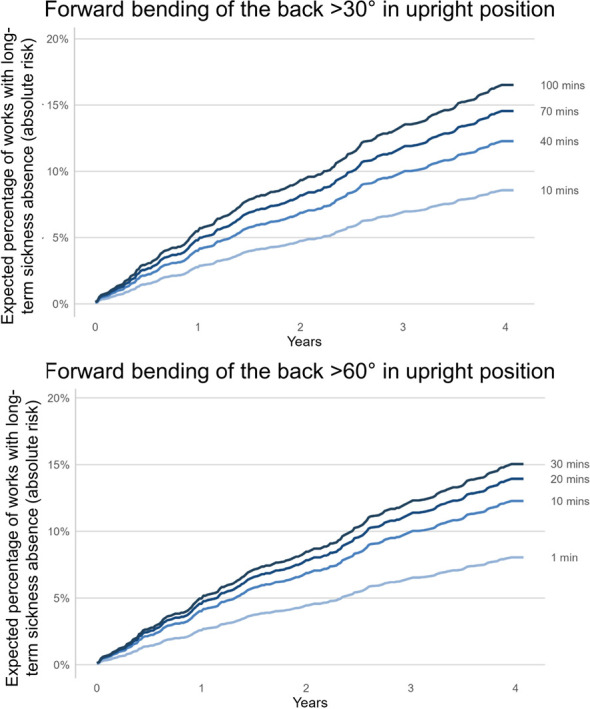Figure 3.

Results of the direction and strength of the association between worktime with forward bending of the back >30˚ and >60˚ in an upright position and prospective absolute (instead of relative risk as shown in Figure 2) risk of long-term sickness absence over the course of 4-year follow up among 944 workers. The Y-axis shows the proportion of workers with long-term sickness absence while the x-axis shows the follow-up time. Each solid line represents a certain amount of worktime with forward bending >30˚ and >60˚ and associated absolute risk of LTSA. From the estimated Kalbfleisch-Prentice-Cox survival function, absolute risk related to forward bending >30˚ and >60˚ was calculated at the grand mean of other predictors (age = 44.7; sex = men; body mass index = 27.2; occupational lift/carry duration = 3.7; type of work = blue-collar). See Methods section to understand how we have calculated the absolute risk.
